
Gallery
Discover captivating historical photographs, intriguing artifacts, and a collection of other fascinating images.
Artifacts
The Oliver Company (est. 1910-1920's)
A soda manufacturing company located in Pontiac, Michigan in the early 1900's. Other names of this company would be JJ Oliver Soda Company and Oliver beverages. Research of similar bottles suggest the company was active between 1910-1931, however no specific information on this company has been found.
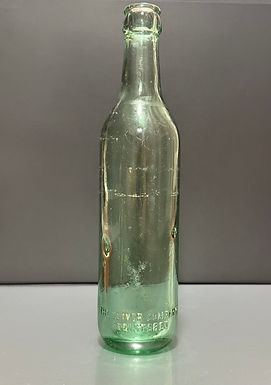

Features:
-2047 and 15 on heel
-Registered
-oval "O" on base
-number/size of bubbles indicate earlier machine-made bottle
Pabst Milwaukee (bet. 1913-1921)


Features:
-Base has WF&S MIL
-William Franzen & Son Milwaukee are bottle manufacturers
PH Kling Brewing Company (1906-1920)
In the mid-1800s, Phillip Kling immigrated from Germany to the United States, making Detroit his new home. With him, he brought a deep passion for German beer, which led him to establish the Peninsular Brewery in 1863. Over time, the brewery evolved into the PH Kling Brewing Co., known for producing a variety of beers, including pilsner, pale ale, porter, and the renowned Gold Seal Export. After Phillip's passing, his son, Kurt Kling, took the helm. However, despite their efforts, the brewery struggled to compete with larger Detroit breweries in the post-Prohibition era, ultimately leading to its decline.
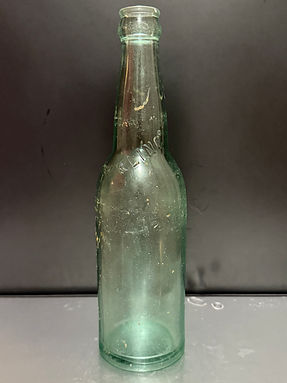

Features:
-Base: PH Klingberg Co; Detroit; Pure & Without Drugs or Poison
Coca-Cola, Ann Arbor
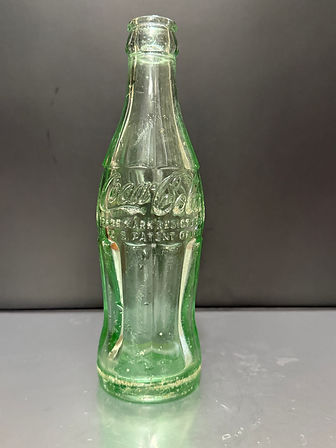

Stroh Detroit (1906-1920)
Stroh Brewing Company is Detroit's oldest brewery, beginning as early as 1850. This bottle is a pre-prohibition era bottle, marking its manufacture date sometime between 1906-1920.
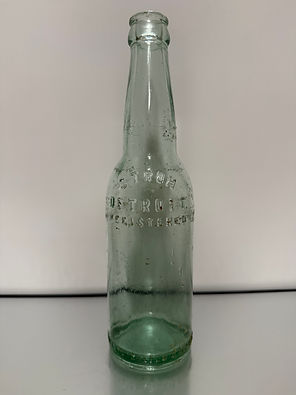

Features:
-Heel: 12.5 Fl Oz
-Registered
T.B. Co Manufacturer
No information on this manufacturer or beverage company has been retrieved.
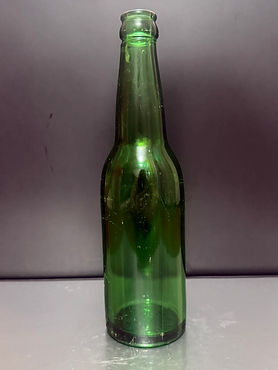
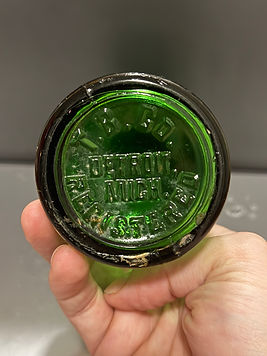
Acme Brewing Co (1907- early 1910's)
Acme Brewing Co. was located in Bentleyville, Pennsylvania and was active between 1907 to around 1920 when prohibition began.
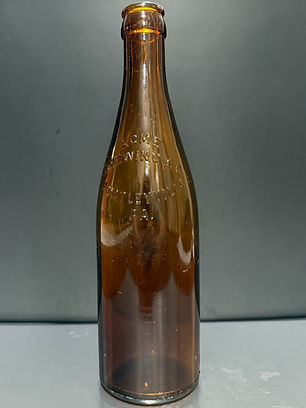
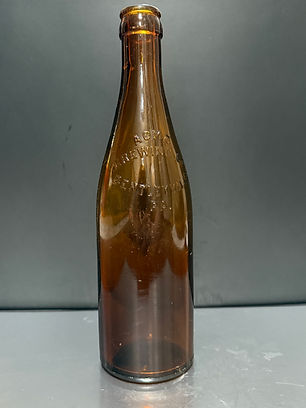
Features:
-2 air vents, suggesting prior to mid 1910's.
Squirt ACL (1977)

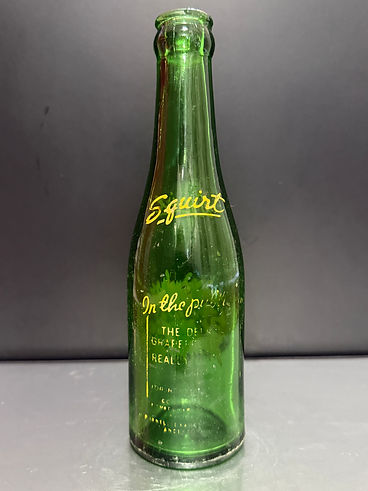
Features:
-Trade-Mark
-Reg. US Pat Off
-Base: 700, G in square, 77
-Glenshaw Glass maker's mark
Pepsi-Cola
On the base, "Dossin" is written in cursive and is italicized. Dossin was a company in the early 1900's that distributed food products in Michigan and northern Ohio. Eventually, Dossin became the main distributor for Pepsi products in the same area.

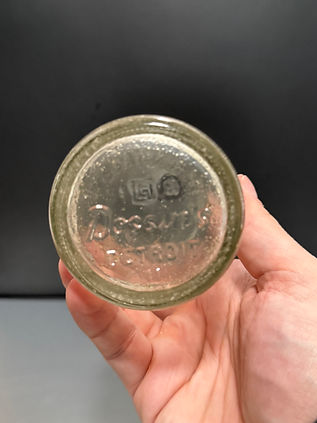
Features:
-DES PAT 120.277
-Base: Dossin's, Detroit, 11
-54, G in box emblem, B
-emblem represents Glenshaw Glass Co., 1904-2004
-B denotes year made. Glenshaw started dating their bottles with a lettering system starting with "G" in 1935.
Unknown ACL (1951)


Features:
-Heel: two indentations
-Base: Owens-Illinois Glass Co.
-3, 51, 3
-G-1093
-3 plant code for Fairmont, West Virginia
Goebel Brown, Shield (1885-1900)
August Goebel founded A. Goebel & Co. alongside Theodore Gorenflo in Detroit, Michigan in 1873. A prussian immigrant, Goebel came to the United States at the age of 17 heading for Chicago. He apparently ran out of money on the way and instead landed in Detroit. Here, he served in Michigan's infantry fighting in the Civil War. In 1879, August Goebel built a factory east of downtown on Rivard and Maple St. By the 1880's, Goebel was Detroit's third largest brewery. Goebel Brewing Company acquired many other breweries in Detroit including Koppitz-Melchers, and sold to Stroh's in 1964.

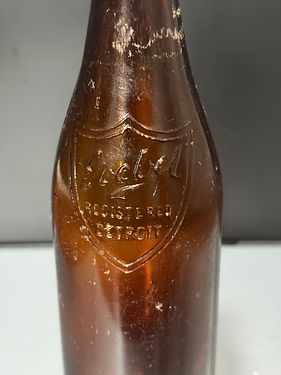
Goebel Clear, Shield
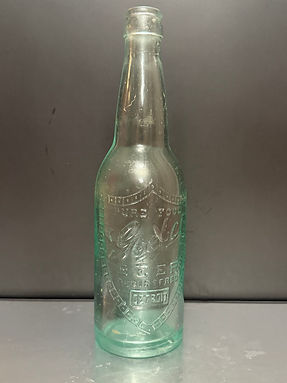
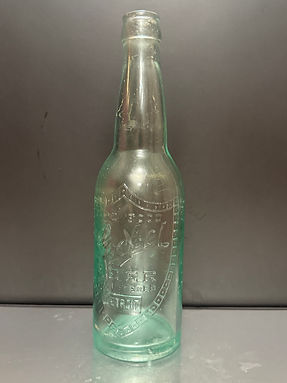

Re Umberto (1938-1980)
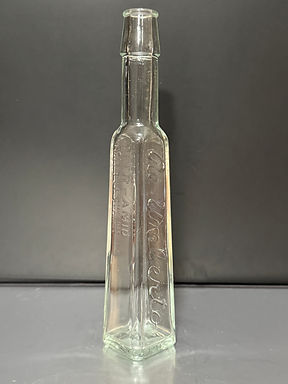

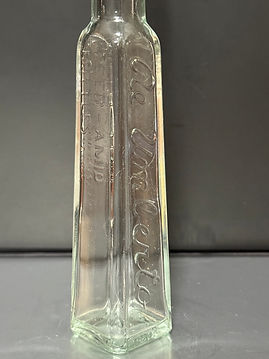
Features:
-Side 1: Peer-Amid Bottles; Reg US Pat Off
-Base: L-569 G; Anchor H emblem; 4
-Emblem denotes Anchor Hocking Glass Corporation (1938-1980)
-Olive oil produced in New York
A.C. Carpenter Chicago Ills (early 1890's)
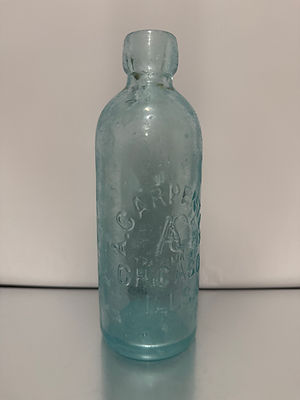


Features:
-Blob top
-soda bottle
-No air vents, suggesting early 1890's
Nelson Baker & Co Manufacturer (1905-1920)
NB & Co. began manufacturing and selling pharmaceuticals in 1890 at a factory in Detroit. The company was founded by Edward H. Nelson and William S. Baker, with Albert Brown Lyon serving as the pharmacist. Notably, Lyon's wife was a descendant of Miles Standish, a Mayflower passenger and ancestor of the decorated Sarah Gertrude Banks.

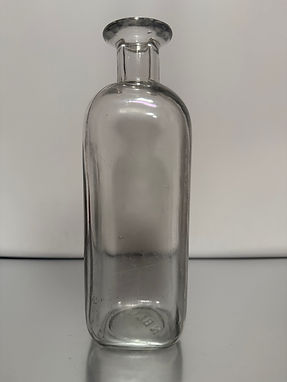
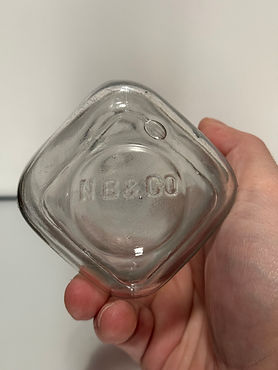
Features:
-Base: NB&Co
-medicinal bottle
-amethyst color
-made in Detroit, MI
Tivoli Brewing Co (1898-1920)
Known as the "beer that bewitches," Tivoli Brewing began in Detroit in 1898 and lasted through Prohibition until 1948. Some say that they even sold their beer in speakeasies of the Midwest during this dry period. Tivoli Brewing Company has a revitalizing effort, opening again under the name Altes Beer. This bottle is likely from the pre-Prohibition era prior to 1920.
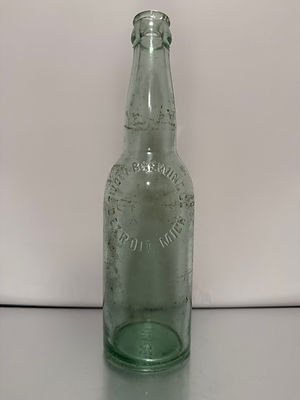
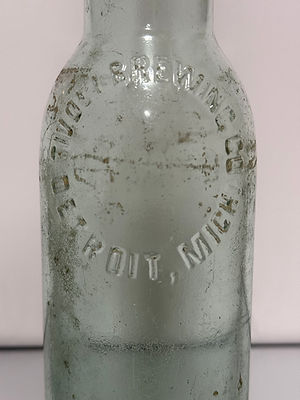

West Side Brewery Company (1893-1902)
Detroit brewing company that was started by German immigrant, William Darmstaetter.

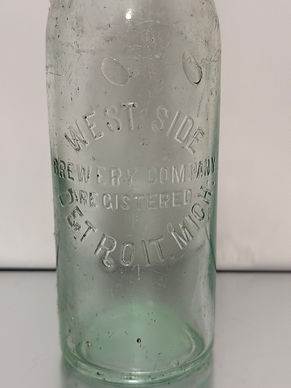

Features:
-numerous relatively large bubbles
-2 air vents on shoulders, showing this bottle was likely made in 1890's
C. Pfeifer Brew Co. (1902-1919)
Conrad Pfeifer moved to Detroit, Michigan from Germany when he was 17 years of age. Here, he learned the art of brewery and started his own brewery under his name. In 1902, he changed the name to C. Pfeifer Brewing Company, which lasted until the prohibition era around 1919. When prohibition ended, Pfeifer's brewery returned under the name Pfeifer Brewing Company. This information indicates that if the "C." is present, the bottle is likely from the pre-Prohibition era.

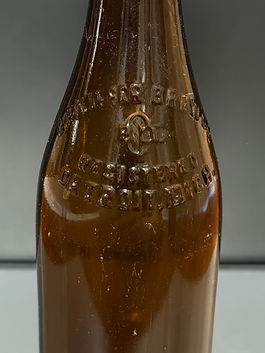
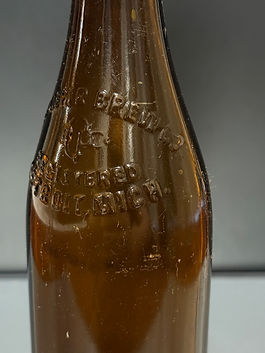
Sky Pilot Cola (1941)
Other than name, no other information regarding this product has been retrieved.

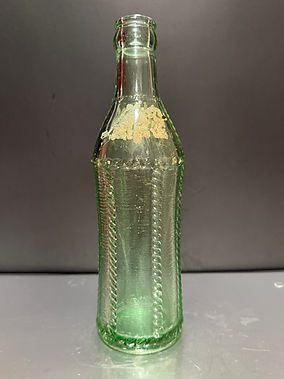

Features:
-missing Applied Color Label (ACL)
-Base: Pittsburgh PA; 9, I emblem, 1.; G1235
-Maker's Mark: Owen's Illinois Glass Co. 1929-1960
-The "." after the 1 signifies 1941.
W.H. Hamilton Co. 1898-1909
The Hamilton family has a large history of glassmaking in central Pennsylvania, starting with the glassmaking pioneer James H. Hamilton in the mid 1800's. His two sons, James M. Hamilton and William Hamilton, followed their father's career path and started an unnamed glassmaking business in 1863, which eventually came to be known as W.H. Hamilton Co. In Pittsburgh, PA, the brothers owned two factories, one that made milk bottles and another that made green prescription bottles. The two factories were eventually damaged by the Alleghany River flooding and fires, so they moved to Charleroi, PA. This is where they began manufacturing clear prescription and drug bottles as shown below. W.H. Hamilton Co. was the only company known to use "H" on the base of prescription or drug store glass bottles without a corresponding number.
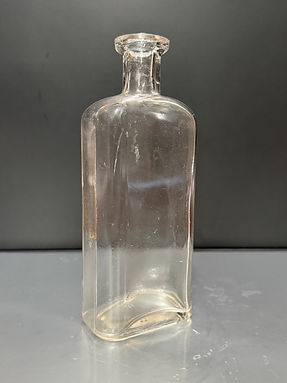
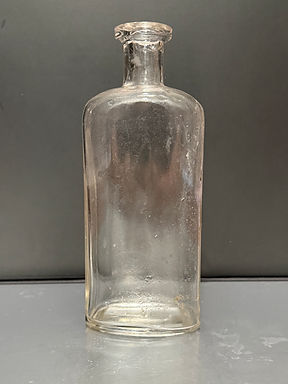
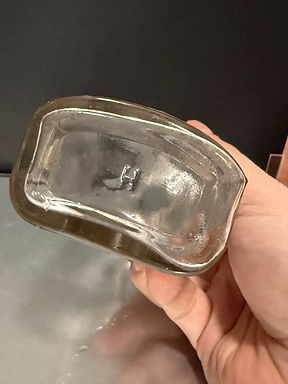
Features:
-Base: H
-Medicinal bottle
-H stamp on base likely represents W.H. Hamilton Co., however other companies may have used this stamp. This company used the "H" between the years 1898 and 1917.
Independent Brewing Co
Under the trade name Independent Brewing Co., this company was active between 1907-1919. They brewed three beers during this time: Holiday Brew, Ideal Beer, Old Fashioned German Brew Beer. It was formed by an independent group of saloon owners to compete with the larger companies and lasted until Prohibition. The company produced beer between 1907-1915, however features on the bottle suggest it was produced closer to 1907. Independent Brewing Company of Detroit is not related to the original Independent Brewing Company of Pittsburgh, PA, though it is believed Detroit's was inspired by Pittsburgh's.



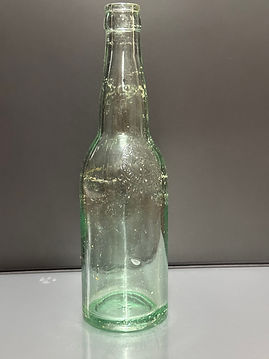
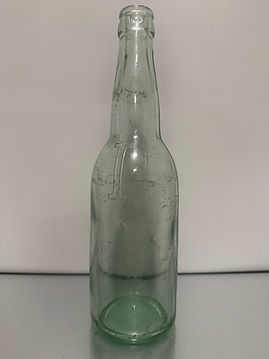
Features:
-2 air vents, suggesting prior to mid 1910's.
-Detroit, Mich
Base: X
Rear: I
Pocket Whiskey Flask
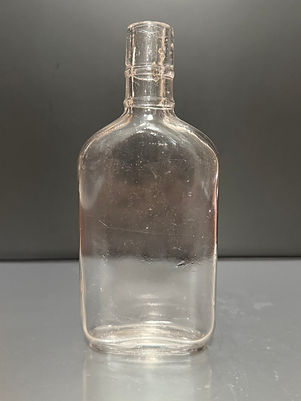

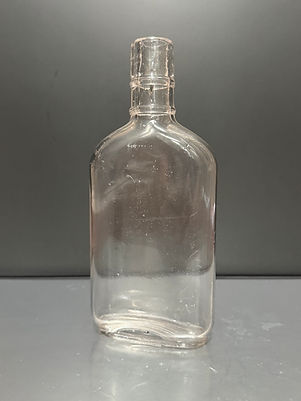
Features:
-https://sha.org/bottle/pdffiles/WhitneyGlass.pdf
Seagram's Crown 7 (1937)
Seagram’s began in the 1800’s in Waterloo, Ontario and eventually became the company known today in 1883 under the ownership of Joseph E. Seagram. The company didn’t gain traction in the United States until after Prohibition in the 1920’s and exploded in the 1930’s. While Seagram’s did not officially start business in the US until after Prohibition, they had to interestingly pay a 1.5 million dollar fee for products sold in the United States during this time period that was never taxed.
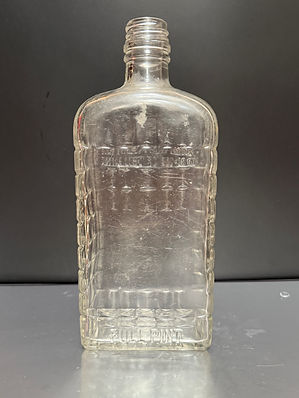
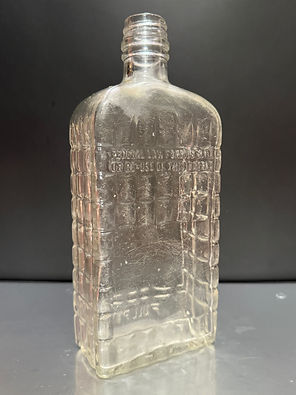
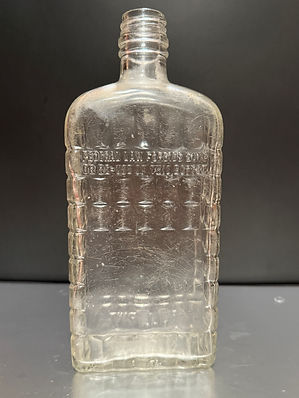


Features:
-Back: Federal Law Forbids Sale or Re-Use of This Botle
-Front Heel: Full Pint
-Base: D126 (distiller code), 67 (house number assigned by government), G diamond emblem, 7 (date code), DES PAT 92901, Made in USA
-7 date code signifies 1937 as after 1940 date codes required 2 digits
-General Glass Co. bottle manufacturer
Koppitz Melchers Brewing Co. Clear with Star (1906-1919)
Konrad Koppitz served as the head brewmaster of Detroit’s renowned Stroh Brewery in the late 19th century. In 1891, he teamed up with Stroh’s cashier, Arthur Melcher, to establish their own venture, Koppitz-Melchers Brewing Co. The brewery thrived until the onset of Prohibition in 1919. Following the repeal of Prohibition, the company reemerged in 1934, this time under the moniker Koppitz-Melchers Inc. Their success continued until 1947, when they were acquired by Detroit’s large brewer, Goebel.

_edited.jpg)
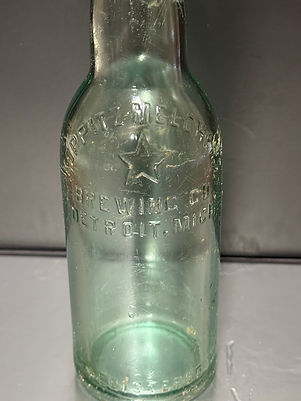
Features:
-Heel: Registered
-Rear Heel: Pure and Without Drugs or Poison
-The Pure Food and Drug Act of 1906 requires the above statement, meaning bottle created after this date.
Koppitz Melchers Brewing Co. Koppitz-Melchers Brown (1906-1919)
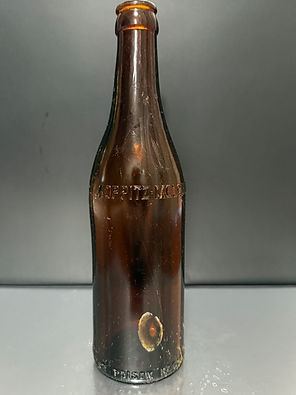
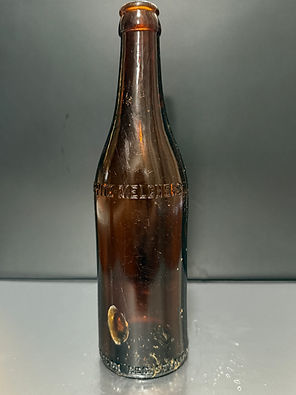
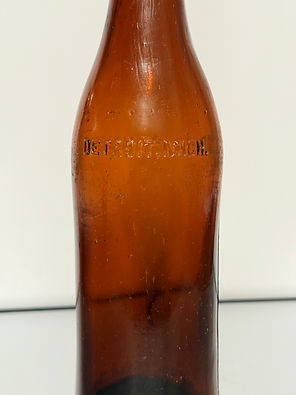

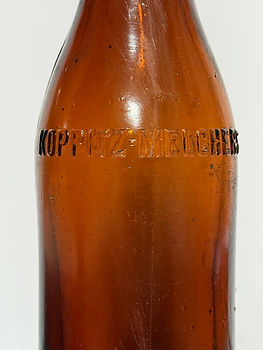

Features:
-Detroit
-Heel: Pure and Without Drugs or Poison
-Base: NBBG Co (North Baltimore Bottling Glass Co. 1885-1920's)
A. Schreiber Brewing Co. (1899-1920)
Anthony Schreiber started A. Schreiber's Brewing Company in 1899, located in Buffalo, New York. They sold a Manru lager, Nilo lager, and Schreiber beer from this date until Prohibition in 1920. They opened post-Prohibition under the name Schreiber Brewing Company Inc. until 1950. This bottle is likely closer to the year 1915.
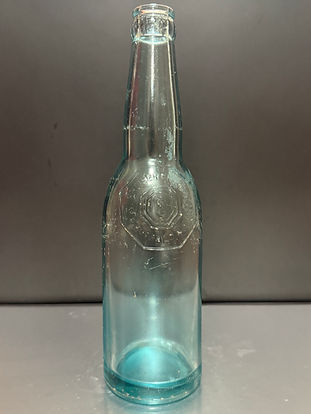
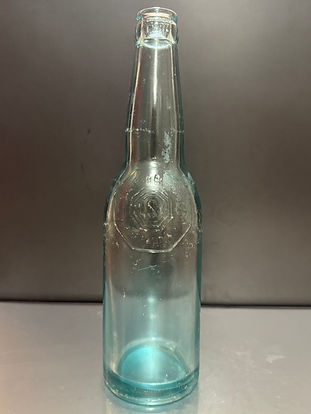
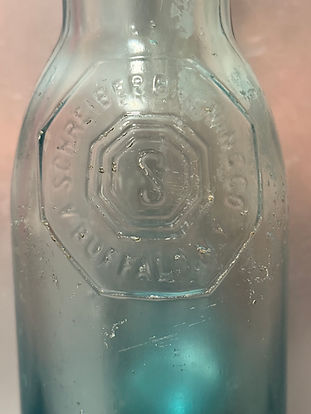
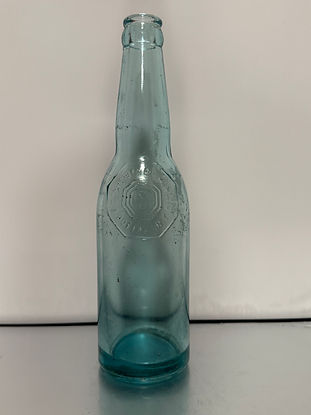

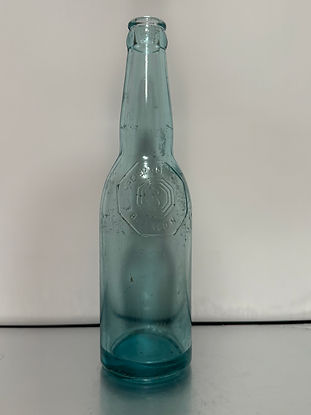
Whistle Soda (1920's-1930's)
Whistle is an orange flavored soda that was invented in 1925 by a man named Charles Leiper Grigg while he was under the employment of the Vess Soda Company. His creation catapulted him forward in the company, where eventual disagreements led to his resignation. Grigg eventually went on to develop 7-UP, while Vess continued selling his orange flavored whistle product that is still sold today. Vess Soda Company began using this decorative design for it's products, selling under Whistling Bottling Co. in 1931.
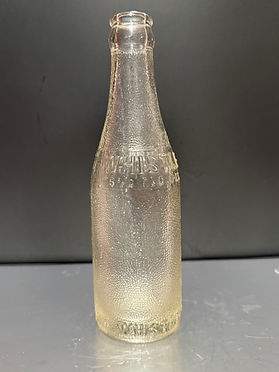
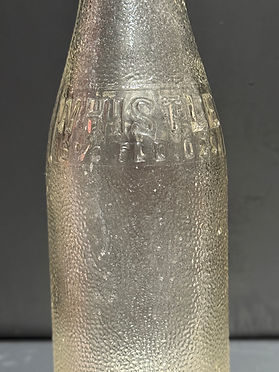

Features:
-R in triangle signifies F.E Reed Glass Co. (1923-1956)
-6.5 Fl. Oz.
-Heel: Whistle Bottling Co.
American Soda Water MFG Co. (1931)
No information has been retrieved on this company.
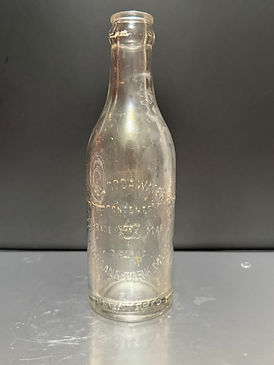

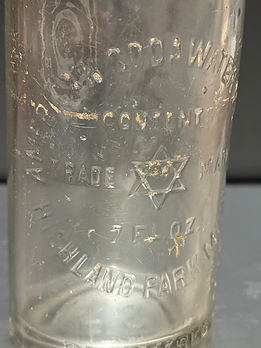

Features:
-Trademark
-7 Fl Oz
-Highland Park, MI
-Heel: Registered
-Base: I; P.S.; 9, I emblem, 1
-Owens-Illinois Glass Company emblem, 9 denotes Streator, IL factory.
Silver Springs Water Company (1936)
In 1913, residents in Northville would drink from a natural artesian well located on Main Street across the Northville Depot. In the 1920's, the Silver Springs Water Company began bottling and selling this water to the residents of Michigan.
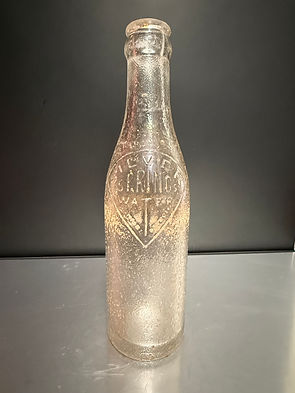
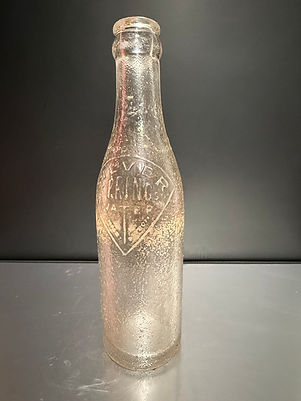
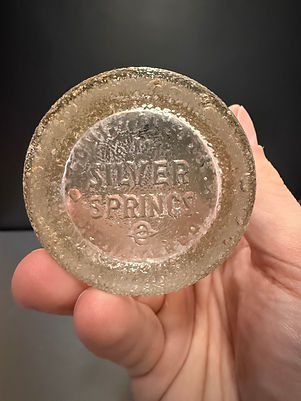
Features:
-Detroit
-Base: Contains 7 Fl Oz; I., 9. 6
-Owens-Illinois Glass Company emblem
-Registered
-Streator, Illinois factory code
Old Mr. Boston Rocking Chair Whiskey (1944)
Old Mr. Boston was distillery located in Boston, Massachusetts from 1933 until 1986. They were known for creating many products including this Rocking Chair Whiskey.
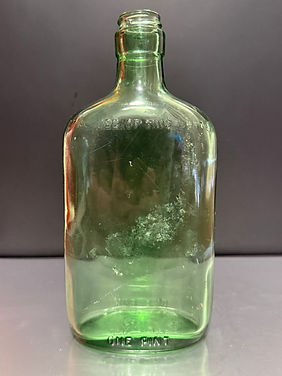
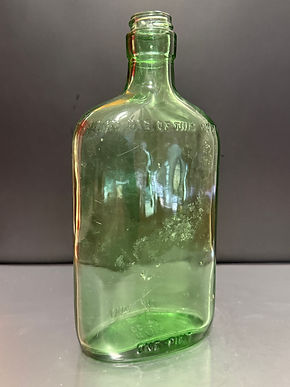

Features:
-Stippled base at edges
-Federal Law Forbids Sale or Re-Use of This Bottle
-Base: 65-44, (manufacturer number - year)
-Base: R174 (Rectifier federal number signifies Old Mr. Boston)
-Owen's-Illinois Glass Company
Unmarked Clear (1910's-1920's)
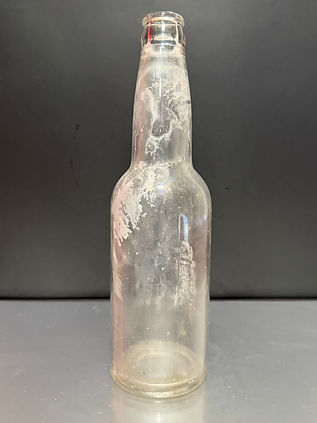
Features:
-machine made
-suction scar indicates Owens-Illinois manufacturer
-roughness of suction scar indicates earlier made, estimated 1910's-1920's
Vernor's ACL (1955)
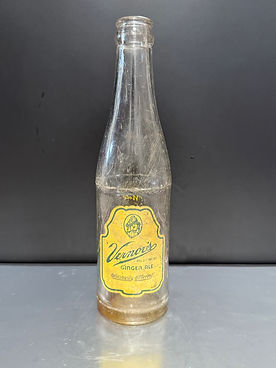

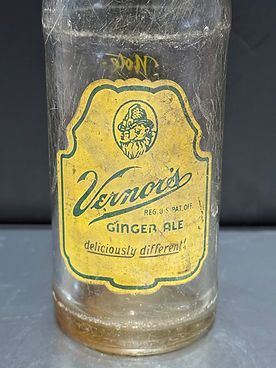

Features:
-Base: Registered; 9, 9, 55
-Owens-Illinois Bottling
-9 factory suggests Streator, Illinois.
Bohemian Bottling Works Co. (1944)
No information has been found on this company.
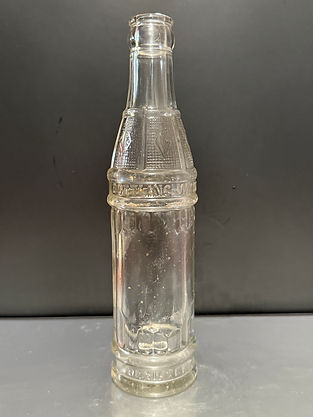
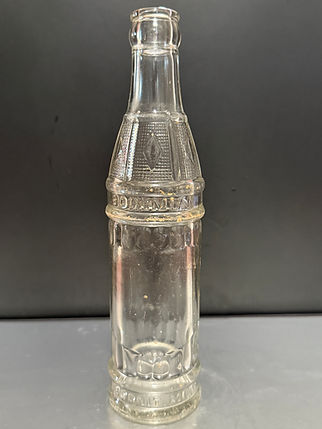

Features:
-registered
Detroit, Mich
-Base: 3, Owens-Illinois emblem, 4.
-7 oz.
-missing ACL label,
*Similar bottles have been found of Dr. Pepper products, however this correlation has not been confirmed.
More Artifact Images Coming Soon!

